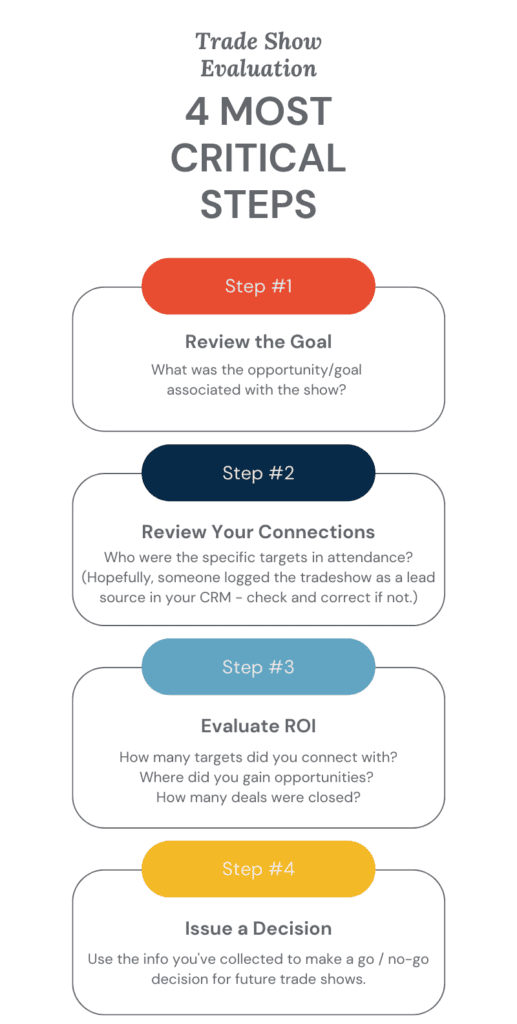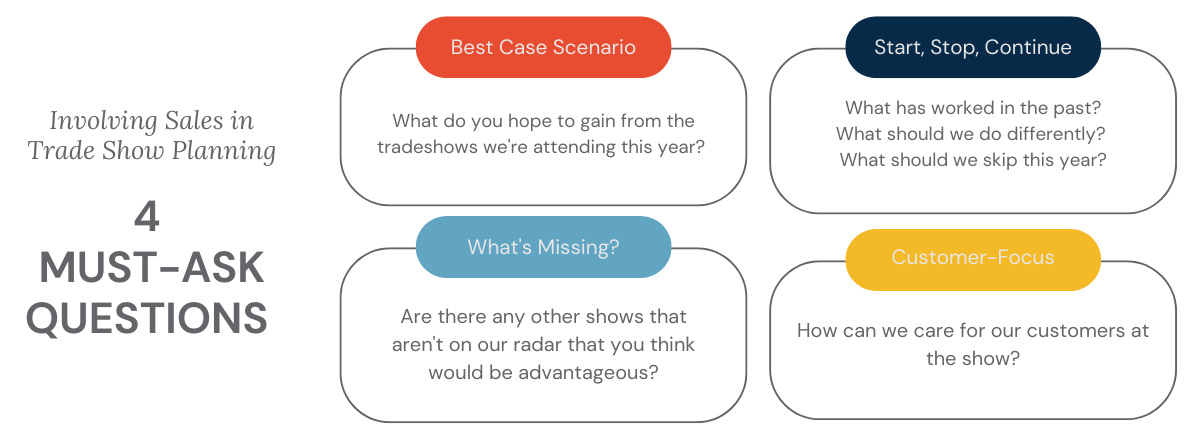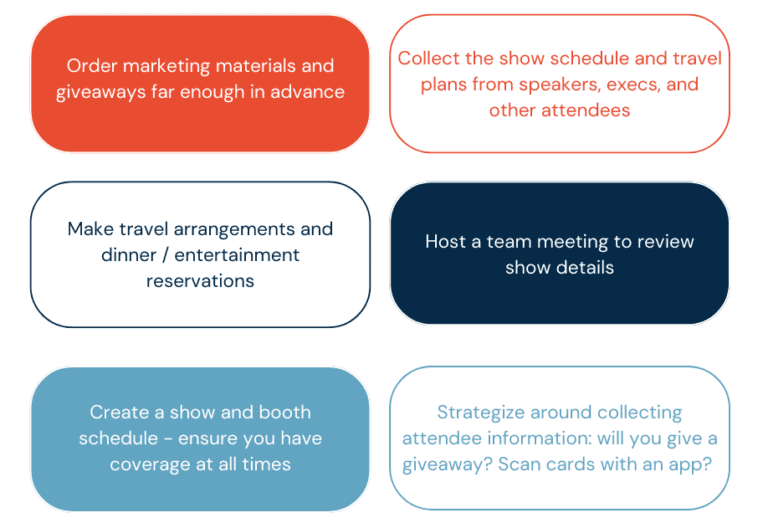
A Foolproof Guide to Managing Trade Shows This Year
Who’s excited about this year’s trade show lineup?
Attendees, show promoters, sales, speakers, exhibit services folks, press and analysts — everyone except the marketing department that has to figure out where they’re going, how they’re showing up, and how to measure ROI.
Jump to a section:
Trade Shows Are Great for Business — If Done Right
B2B trade shows remain effective vehicles for:
- Brand building
- In-person relationships (customers, prospects)
- Professional networking (publications, analysts, partners)
- Answering questions in real-time
- Accelerating sales funnels
- Announcing product launches or updates
- Capturing qualified leads
- Collecting industry insight, feedback, trends, education
With so many good shows to attend, attendees are enthused about coming back. Industry press and analysts look forward to seeing new things, and partners need to network. It’s no wonder exhibitors face added pressure to stand out and get it right.
Even under the best of circumstances, exhibiting is a detail-oriented, project management nightmare. Marketers who are new to the company may not have trustworthy records of what’s been done in the past. There may be no information about previous tactics or results. Even so…
Early Planning Leads to Greater Agility
Trade show season is intense (we get it!), but if you plan ahead, you’ll thank yourself. Read on for eleven tips to get the best results out of your trade show plan next year.
Looking for a list of supply chain and transportation industry shows? Look no further! Check out our Master Industry Show List:
1. Evaluate the Past
November/December is the perfect time for a check in with how your exhibit marketing has been performing. Most companies don’t attend much anyway from mid-November to early January, so there may be some downtime (in between stuffing holiday cards).

Start your event planning with a solid foundation of historical research and strategy, and you’re on the right track to success.
Our Trade Show Evaluation Spreadsheet makes the evaluation process easy and straightforward for you.
Get Started: Download the Free Tradeshow Evaluation Spreadsheet
2. Plan Trade Shows Around Goals
When you identify future trade show opportunities, assign realistic goals to them. Goals are basic and essential for your upcoming trade show season. Don’t skimp on time spent thinking about them. Your best exhibiting results depend on a goal-driven marketing foundation. Make sure you know the event audience personas and understand why they attend. A survey or focus group is a good way to plan, but you don’t have to go that far. Solicit input on social media. Research your customers with a short survey, but do it soon while you have time to put the feedback into action. Attendance should not always be about getting a specific amount of leads. You should consider other objectives like brand awareness, building relationships and speaking opportunities. Other attainable goals include:- Meaningful client meetings
- Certain number of demos
- Complete specific demos for specific accounts
- Prospect dinners
- Show the brand face and make an industry appearance
- Complete x-number of press and analyst briefings
3. Bring in the Sales Team
Gain sales buy-in with the plan up front, because they are key to any successful event. Decide in advance how you will work together to address any additional trade show suggestions during the course of the year, or slate them in for next year.
Another good reason to think about trade shows now and include sales is that the fourth quarter often aligns with annual budgeting. If you have sales leadership support, you may have an easier time getting the investment you’ll need.
Sales can be a wealth of information. To maximize your time with the always-busy sales team, schedule a planning meeting and come prepared.

Be sure to show your sales colleagues any data you’ve collected about customers, attendees, past show results — whatever you can find that you trust.
4. Organize the Basics
You’ll need a budget and plan to drive attendance and leads. This checklist of basics will make sure you don’t miss anything.
- Create your next trade show calendar (feel free to use our industry events calendar tool)
- Collect advertising schedules and sponsorship opportunities.
- Request previous lists of exhibitors and attendees.
- Analyze purpose and value (cost/ benefit analysis).
- Identify, budget and select final shows and placements.
- Gather, manage contracts.
- Build execution schedule into campaign calendar, project management systems.
- Create pre- and post-show outreach plans.
- What about the booth? After selecting shows, you’ll decide which space to purchase and then what booth components need to be there.
Even though you may be planning well ahead, timing is everything when it comes to exhibiting. You don’t want to take so long to decide a show is a good fit that you miss the opportunity to secure your spot. Most shows let you reserve your current booth spot at the current show. The same goes with speaking spots, which typically start filling up three months after the current show for the next show. Ask organizers when sponsorships and ad schedules for the next event will be released, as some come out during the show or soon after.
5. Pre-Plan for a Smoother Launch
Once you have the basics of your trade show plan, you can take steps like these:
- Overlay the show calendar with social media, PR and product launch calendars.
- Plan accordingly for travel.
- Connect with internal resources you need.
- Consider sending ad opportunities for the year in bulk to your designer.
- Share the show schedule with your exhibition company if you have one.
6. Invest in On-site Field Research at Other Events
You don’t always need to invest in a full booth presence at a new show. Sometimes it’s best to get a ticket or two and walk the event to assess what exhibitors are doing, the quality of the audience, and the overall opportunity. The in-person research is priceless. Conference agendas are great sources of information about why audiences come to a particular show.
Consider sending someone from the sales or marketing team or another local colleague to scout out non-traditional shows. This could be especially wise as some post-covid shows shift to smaller events with focused attendance.
Put aside a small budget for these unplanned opportunities. Set expectations that sales will only walk shows for research, and you’re not there to sponsor or exhibit unless your criteria are met. Provide your “show walker” with a list of questions. Coach them on how to talk to attendees and exhibitors to get information you need.
7. Think Outside the Box Without Pressure
While you may feel inadequate competing against a big brand booth with flashy technology, remember that’s not the primary reason attendees make the effort to come to an event.
They are looking for information and ideas, so keep that top of mind as you plan. How can you make it easier when it comes to getting answers? And think outside the box when it comes to creating memorable experiences.
Take advantage of the event location. Companies often plan dinners at iconic area restaurants, or invite customers and prospects to do things specific to the area. Think Vegas for desert four wheeling, or a coastal place where you could easily rent a yacht to entertain clients?
For at-show experience and engagement encourage your team to think creatively (but keep it simple.) One successful exhibit campaign hid items around the show as an information scavenger hunt. Another fun favorite is indoor golf where players win money when the ball stops on it. Creative, memorable experiences can happen anywhere.
8. Prepare for Showtime Details
Add these to your trade show planning checklist:

9. Make Use of Time Before and After Shows
The time before and after events offers unique opportunities for additional outreach to target audiences.
Before the trade show, search your CRM to see who is in the area you are traveling to. Make the best of your travel there by scheduling in-person meetings or hosting dinners before the show starts or after it ends (two birds, one stone). Send emails to prospects and customers you think might attend the show to try to get meetings on the books during the show or to host a dinner and invite a group.
Consider a post-event, on-demand webinar wrap up or podcast with highlights and news announcements.
10. Conduct a Post-Mortem
Another best practice for your post-show period — hold a follow-up meeting or post-mortem after every event. Include representatives from sales and from marketing ops to report on leads to the database.
Tip – Make notes during the entire show though (and ask others to as well) so no ideas fall through the cracks and you can talk about them later. Keep the feedback in a good place for next year’s planning and for any immediate optimization you can do.
11. Calculate ROI
There are many ways to calculate the return on your exhibit marketing investment. The fallback approach is to have lead count goals, but smart marketers know you can go much further than that. It just takes longer to nurture the leads.
Your company may already have a lead management platform in place. Ensure exhibit leads are well identified throughout the lead tracking process so you can capture true revenue attribution. Most show-related deals won’t be completed until long after the event itself.
Three buckets will account for most of your ROI formula:

As you plan, ensure you’re keeping good records in these areas to truly measure the hard work that goes into trade show marketing.
Make This Year’s Trade Show Plan Your Best Yet
It’s definitely not too early to plan for next year’s trade shows. Don’t delay taking stock of your show strategy now, and proactively plan your objectives for next year. Use these eleven tips as a mini-planner to focus on information that will benefit, strengthen and optimize your results.
Exhibit marketing is tough enough, and even if events have fundamentally changed, some basic steps shouldn’t be neglected. These tips will get your trade show planning off to a solid start. Our trained team can be the extra support and experience you need to get it done. Bring your questions and let’s talk.
